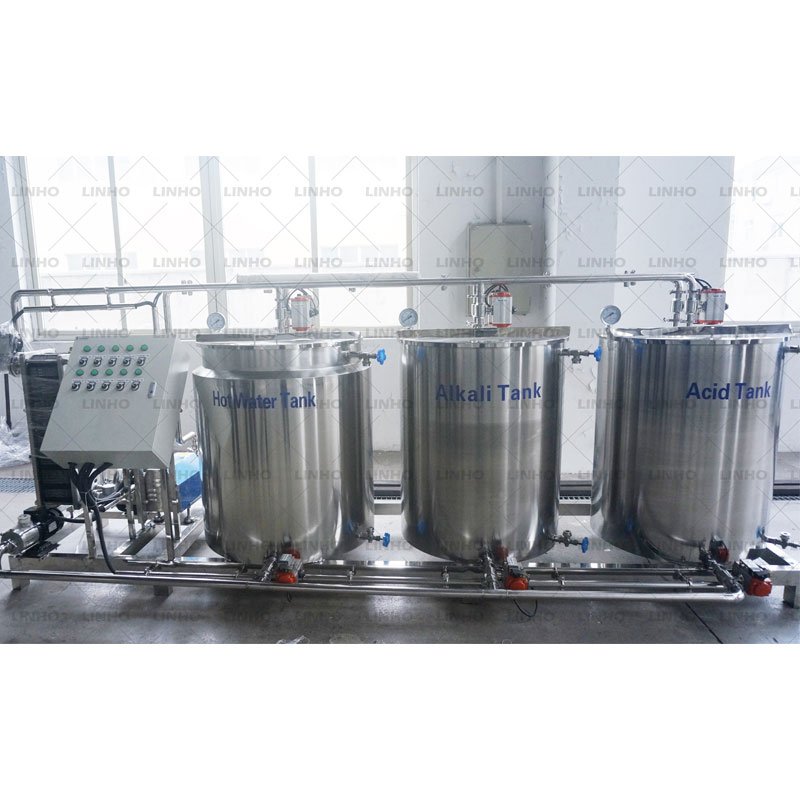The beverage filling machine is a complex piece of equipment that needs regular maintenance and care to operate effectively and prolong its lifespan. To ensure optimal performance, there are several precautions to follow when maintaining and caring for a beverage filling machine.
- Regular cleaning: Regular cleaning is necessary for maintaining the performance and longevity of the beverage filling machine. Residues can accumulate inside the machine, and professional cleaning agents and methods should be used to avoid any damage to the machine.
- Regular replacement of parts: Regularly replacing critical parts in the filling machine is crucial to extend its life and reduce maintenance costs. These parts include lubricating oil, seals, motors, electronic components, and more.
- Check frequently: Regularly checking the various components of the filling machine is essential to ensure that they are working correctly. This includes examining the valves, sensors, motors, and machine control panels to ensure they are functioning as intended. Any issues should be addressed immediately to prevent further damage or malfunctions.
- Maintenance lubrication: Regular lubrication of the machine is essential as it can reduce wear and tear, and minimize the noise during operation.
- Regular maintenance: Regular comprehensive maintenance is necessary for the beverage filling machine to ensure that it remains in top condition. During the maintenance, all the parts that need to be replaced should be checked and replaced to keep the machine functioning properly.
- Keep it safe: When stopping or repairing, the filling machine should be kept safe and protected from damage or corrosion of the machine.
- Regular training of operators: Regular operator training is essential to ensure proper operation, maintenance, and care of the beverage filling machine. Operators should be trained to understand the basic working principles of the machine, as well as proper maintenance and care methods to avoid common failures.
CIP, which stands for Clean-in-Place, is a common method used to clean beverage filling machine.

This automatic cleaning technology is typically used for cleaning pipelines, storage tanks, containers, and other equipment that contain liquid or semi-solid materials, to maintain the hygiene and safety of the production process. A CIP system usually includes a series of cleaning cycles that involve both cleaning and rinsing.
Here are the steps to use CIP for cleaning:
- Prepare cleaning solution: To ensure effective cleaning, it is important to configure the appropriate cleaning solution for the filling machine according to the type and degree of materials to be cleaned. This helps to prevent damage to the machine and ensure the best cleaning results.
- Connect to the CIP system: The CIP system pumps the cleaning solution into the pipeline, which is then transported to the equipment that requires cleaning.
- Cleaning cycle: To initiate the cleaning cycle, start the CIP system, which generally consists of three stages: pickling, alkaline washing, and rinsing.
- Cleaning: During the CIP cleaning process, the cleaning liquid is pumped into the equipment and sprayed onto the interior surfaces through the circulation pump and nozzle. This allows the cleaning solution to effectively remove any dirt, debris, or bacteria that may be present.
- Rinse: After the cleaning cycle, it is important to rinse the device with clean water or other rinse solution to remove any remaining cleaning fluid and dirt. This step helps ensure that the equipment is thoroughly cleaned and ready for use. The rinsing process is usually performed using a separate CIP cycle with clean water or rinse solution. The rinse cycle may be repeated multiple times until the equipment is completely free of cleaning agents and residue。
- Disinfection: If necessary, disinfectant can be used in the CIP system to kill any remaining bacteria and viruses. This step is particularly important in food and beverage production where hygiene and safety are critical. The disinfectant solution is circulated through the equipment and then rinsed off with clean water to ensure that no harmful residues remain. It’s essential to use the appropriate disinfectant solution that’s effective against the specific types of microorganisms that are present.
- Complete cleaning: After completing the cleaning cycle, it is important to ensure that all cleaning and rinse liquids have been completely drained from the equipment to avoid contamination of the next batch of products. The equipment should also be thoroughly inspected for any residual dirt or bacteria before being used for production again.
- Disconnect the CIP system: After the cleaning cycle is complete and the cleaning and rinsing fluids are discharged, it is important to disconnect the CIP system from the equipment and clean and maintain its various parts. This includes disassembling and cleaning the circulation pump, filter, nozzle, and other parts, as well as inspecting for any damage or wear and replacing any damaged parts. Regular maintenance of the CIP system will help ensure its proper function and effectiveness in cleaning the filling machine.
In the cleaning of beverage filling machine, commonly used cleaning liquids include the following:
- Alkaline: mainly used to remove organic dirt and deposits inside the machine, generally using alkaline made of sodium hydroxide or phosphate.
- Acid: mainly used to remove inorganic dirt and scale inside the machine, commonly used acids are nitric acid, phosphoric acid and acetic acid.
- Rinse solution: used to clean the cleaning solution of alkaline and acid residue, generally pure water or deionized water.
- Disinfectant: used to kill bacteria and viruses, commonly used disinfectants are hydrogen peroxide, ozone and sodium hypochlorite.
To ensure the effectiveness and safety of the cleaning process, it is important to adjust the acid-alkaline concentration of the CIP cleaning solution according to the specific cleaning needs, materials, and equipment. Typically, the concentration ranges from 0.5% to 2%. However, it is crucial to follow safety operation procedures and wear protective equipment while handling the CIP cleaning fluid.
Fully automatic CIP and semi-automatic CIP are two different methods used for cleaning equipment. The main difference between them is the degree of automation and cleaning efficiency.


Fully Automatic CIP (Clean-In-Place) is a highly automated cleaning method that utilizes preset programs and control systems for automatic cleaning. The system includes various parts such as cleaning liquid preparation, pipeline transportation, cleaning liquid circulation, and cleaning liquid discharge. It enables comprehensive and thorough cleaning of equipment with high efficiency and convenient operation. This cleaning method is ideal for large-scale production lines like beverage and pharmaceutical production lines, as it ensures production efficiency and cleanliness of the production line.
Semi-automatic CIP is a cleaning method that requires manual intervention in certain cleaning processes, such as adding cleaning liquid, starting/stopping cleaning fluid circulation, and draining cleaning fluid. Compared to fully automatic CIP, semi-automatic CIP involves more manual operation and control, which may lead to slightly lower cleaning efficiency and quality. However, it is easier to operate and is suitable for small production lines or equipment.
Fully automatic CIP is a highly automated cleaning method that uses preset programs and control systems for automatic cleaning, while semi-automatic CIP requires manual participation in some cleaning processes. Fully automatic CIP is ideal for large-scale production lines with high cleaning requirements, while semi-automatic CIP is more suitable for small production lines with lower cleaning standards. Although fully automatic CIP has higher cleaning efficiency and automation, it also has higher costs compared to semi-automatic CIP.
In addition, the CIP system, as part of the equipment, also needs to be cleaned and maintained regularly. The following are the precautions for cleaning and maintenance of the CIP system itself:
- It is important to conduct regular inspections of the CIP system to identify any potential leaks or blockages in the pipelines and connection parts. These issues should be addressed promptly to ensure the efficient operation of the system and to prevent any contamination of the equipment being cleaned.
- Additionally, it’s essential to ensure that the storage tank and agitator for the acid and alkali liquids in the CIP system are functioning correctly, as this ensures that the concentration and mixing of these solutions are uniform. By performing these routine checks, the overall reliability and effectiveness of the CIP system can be maintained.
- Clean the filter in the CIP system regularly to prevent filter clogging from affecting the cleaning effect.
- Regularly check whether the pipelines, pumps, valves, etc. of the CIP system are damaged or worn, and replace them in time.
- Regularly check whether the control system and instruments of the CIP system are normal to ensure the accuracy of cleaning and disinfection.
- The CIP system is regularly cleaned and disinfected to avoid contamination and bacterial growth, while ensuring cleaning effectiveness.
- Before the operation of the CIP system, the system leakage inspection should be carried out to ensure the safety of operation.
- Regularly check whether the operators of the CIP system have mastered the correct operation methods and precautions to improve the operational efficiency and safety of the system.
In summary, the CIP system is a crucial cleaning equipment in the production line that requires regular cleaning and maintenance. Keeping the system clean and functioning properly is essential to ensure product hygiene and production safety.
It’s important to note that the liquid tank of gravity filling machines is generally not suitable for CIP cleaning. These tanks usually have an open structure without a sealing device, making it difficult to prevent cleaning liquid from overflowing or penetrating into the machine’s interior. Furthermore, gravity filling machines are typically used to fill materials that are not easily contaminated, and therefore have simpler cleaning requirements that can be met with external spray or manual cleaning. Consequently, compared to other filling machines, gravity filling machines do not require CIP cleaning.
Isobaric and vacuum filling machines are suitable for CIP cleaning. To ensure thorough cleaning, special CIP cleaning lines and nozzles should be used to allow the cleaning fluid to reach all areas that require cleaning. Proper pipe connections and valve control are also important to prevent the cleaning fluid from flowing into the product pipeline. Before CIP cleaning, it is crucial to check for any blockages in the filling machine to prevent pipeline blockage or damage to the machine during the cleaning process.


